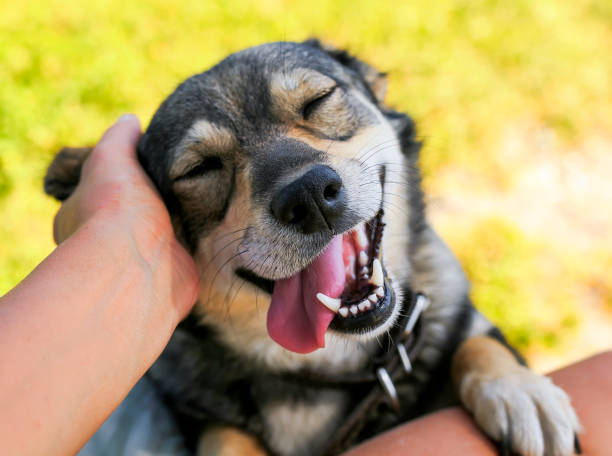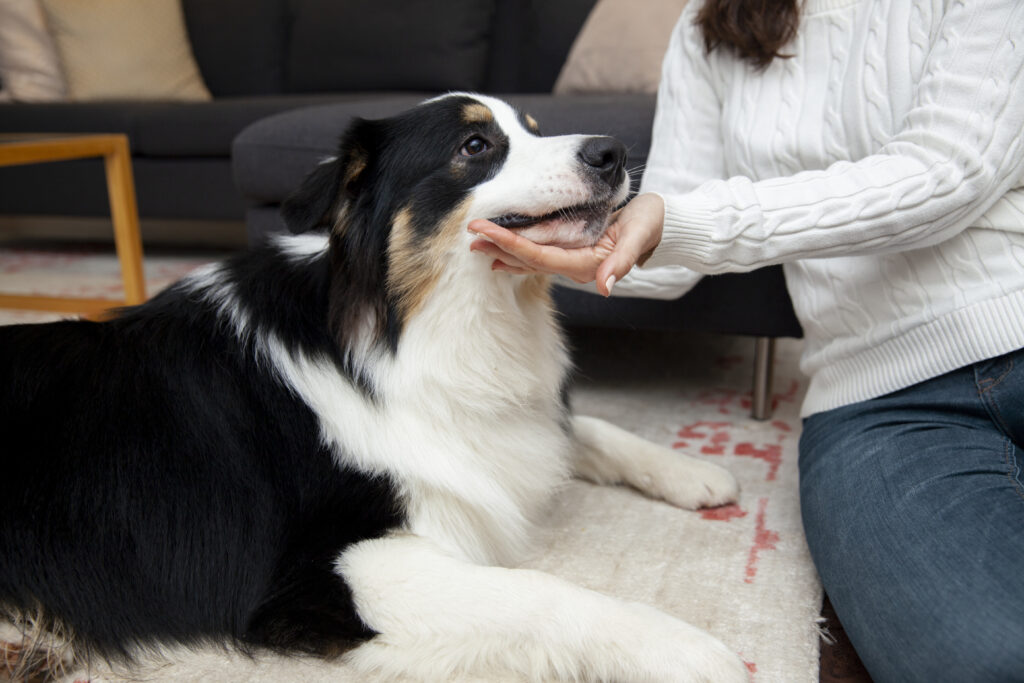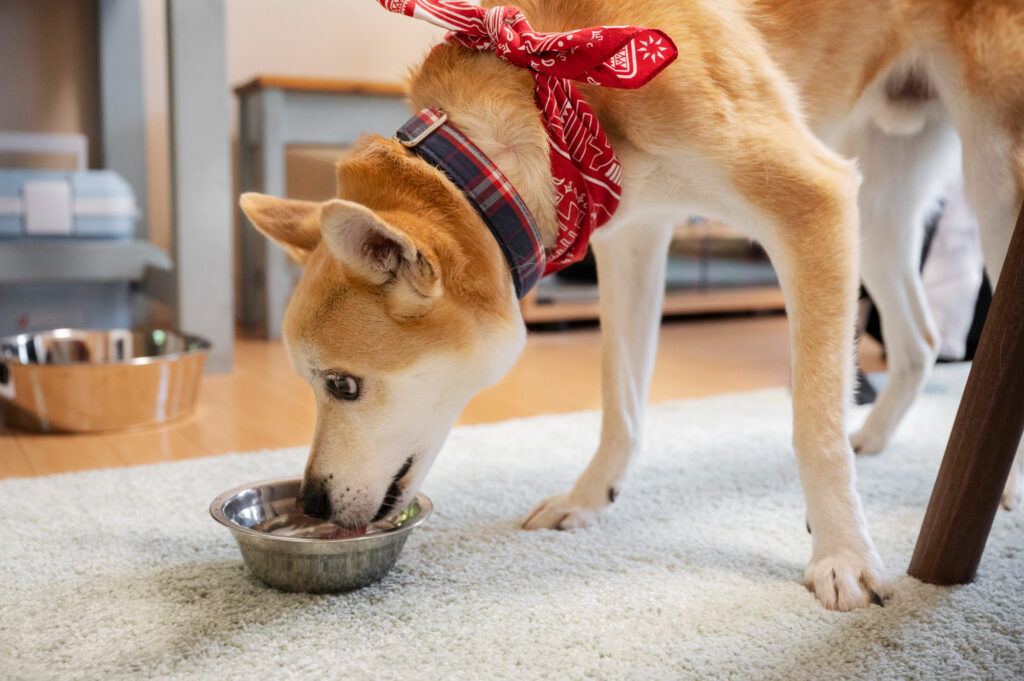
So you’ve heard the rumblings online and from fellow pet parents: raw feeding for pets. It’s a hot topic, and for good reason. We all want our furry companions to live long, healthy lives, and what they eat plays a big part in that. But is raw feeding all it’s cracked up to be? Let’s untangle the truth about raw food diets for pets, explore the potential benefits and risks, and answer your burning questions!
What Exactly is Raw Feeding?
Imagine your pet’s dinner plate piled high with fresh, uncooked ingredients. That’s the essence of raw feeding! It involves providing your pet with a diet that mimics what their ancestors might have eaten in the wild. This typically includes:
Also Read: 07 Tips for Personalized Pet Nutrition Plans: Fueling Your Pet’s Best Life
- Muscle meat: This forms the foundation of a raw diet, providing essential protein for your pet’s growth and energy. Think lean cuts like chicken, turkey, beef, or lamb.
- Organ meats: Organs like liver, kidney, and heart are packed with vitamins and minerals, making them a valuable addition to a raw diet.
- Bones: Raw bones offer a natural source of calcium and phosphorus for strong bones and teeth. However, some caution is needed, as we’ll discuss later.
- Fruits and vegetables: These add essential vitamins, minerals, and fiber to your pet’s diet.
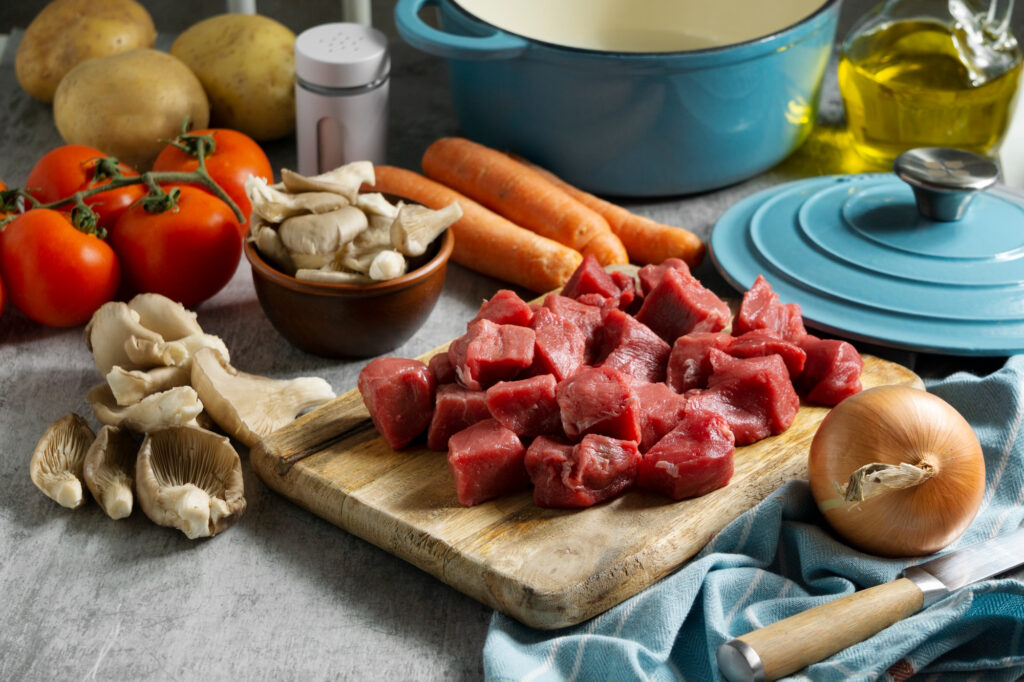
Why Do People Choose Raw Feeding?
Pet owners choose raw feeding for a variety of reasons. Here are some of the most common:
- A belief that raw food is more natural and closer to what pets evolved to eat.
- Concerns about the ingredients and processing methods used in commercially available pet food.
- A hope that raw food can improve a pet’s overall health, coat, and digestion.
Potential Benefits of Raw Feeding:
While more research is needed, some pet owners report that raw feeding has led to positive changes in their companions, such as:
- Shinier coat and healthier skin: Raw food may provide essential fatty acids that contribute to a glossy coat and healthy skin.
- Improved digestion: Some pets seem to have fewer digestive issues on a raw food diet.
- Increased energy levels: The high protein content in raw food might give your pet more pep in their step.
- Reduced weight gain: Raw food may be lower in calories than some commercially available kibble, potentially aiding weight management.
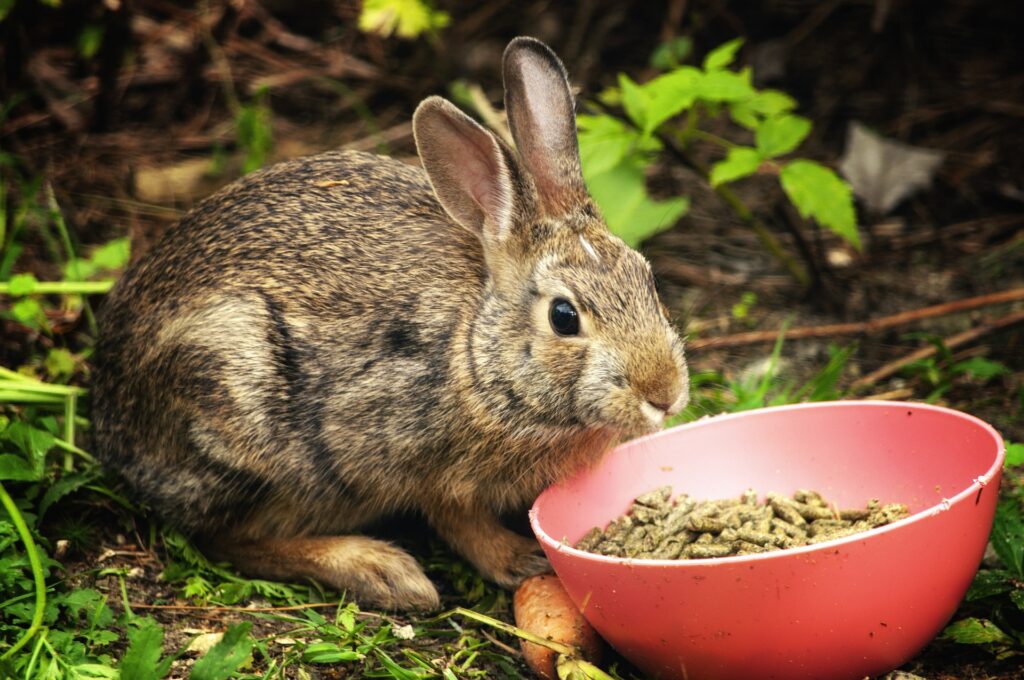
Important Considerations and Risks of Raw Feeding:
Before diving headfirst into raw feeding, it’s crucial to understand the potential risks involved:
- Nutritional imbalances: Creating a balanced raw food diet requires research or consulting with a veterinarian or veterinary nutritionist. Deficiencies in essential nutrients can lead to health problems.
Also Read: 05 Homemade Dog Food Recipes for Skin Allergies: Itchy Relief for Your Furry Friend!
- Bacterial contamination: Raw meat can harbor harmful bacteria like Salmonella and E. coli, posing a risk to both you and your pet. Safe handling practices are essential.
- Choking hazard: Raw bones can be a choking hazard, especially for young or small pets. Be sure to choose appropriate bone types and supervise your pet while they chew.
- Parasites: Raw meat may contain parasites that can make your pet sick. Freezing the meat for a specific period can help kill some parasites, but consult your veterinarian for guidance.
- Cost: Raw feeding can be more expensive than commercially available pet food.
Is Raw Feeding Right for My Pet?
There’s no one-size-fits-all answer. Raw feeding can be a healthy option for some pets, but it’s not for everyone. Here are some things to consider:
- Your pet’s health: Discuss raw feeding with your veterinarian, especially if your pet has any underlying health conditions.
- Your lifestyle: Raw feeding requires preparation and proper handling of raw meat. Are you committed to the time and effort involved?
- Your budget: Raw feeding can be more expensive than kibble.

Alternatives to Raw Feeding:
If raw feeding isn’t the right fit for you, don’t worry! Here are some alternatives:
- High-quality commercially available pet food: Look for reputable brands that offer balanced nutrition and use whole-food ingredients.
- Cooked homemade diets: You can cook your pet’s food at home, but ensure you consult with a veterinarian or veterinary nutritionist to create a balanced recipe.
Important Tips for Safe Raw Feeding:
If you decide to try raw feeding, here are some essential tips:
- Do your research: Learn about the nutritional needs of your pet and how to create a balanced raw food diet.
- Source your ingredients carefully: Choose high-quality, human-grade meat from reputable sources.
- Freeze meat before feeding: This can help kill some parasites, but freezing doesn’t eliminate all risks. Consult with your veterinarian for specific recommendations on freezing times.
- Practice safe handling: Wash your hands thoroughly and disinfect surfaces after handling raw meat to prevent the spread of bacteria.
- Choose appropriate bones: Avoid weight-bearing bones, as they can splinter and cause internal injuries. Opt for softer bones like cartilage bones (ribs, necks, wings) appropriate for your pet’s size.
- Supervise your pet while eating: This helps prevent choking or digestive upset from consuming large pieces of bone or meat.
- Monitor your pet’s health: Watch for any changes in appetite, stool quality, or behavior. If you notice any concerns, consult your veterinarian immediately.
Also Read: Vet-Approved Homemade Dog Food Recipes for Kidney Disease: An Ultimate Guide
Additional Resources:
- The Association of American Feed Control Officials (AAFCO) provides information on pet food labeling and regulations: https://www.aafco.org/
- The American Veterinary Medical Association (AVMA) offers a resource page on pet nutrition: https://www.avma.org/resources-tools/animal-health-and-welfare/nutrition-matters
Raw Feeding: The Final Verdict
Raw feeding can be a healthy and beneficial dietary choice for some pets, but it’s not without its risks and challenges. Carefully weigh the pros and cons, consider your lifestyle and budget, and always prioritize your pet’s health. Discuss this option with your veterinarian to determine if it’s the right path for your furry friend.
Remember:
- A balanced and complete diet is crucial for your pet’s health, regardless of whether you choose raw food, commercially available kibble, or cooked homemade meals.
- Work with your veterinarian to develop a nutritional plan that meets your pet’s specific needs and preferences.
Happy feeding!
Raw Feeding for Pets: Concerns, Benefits and Risks – FAQ
- Isn’t raw meat dangerous for my pet? Can’t they get sick from bacteria?
Raw meat can harbor bacteria like Salmonella and E. coli, which can be harmful to both you and your pet. This is a valid concern. Here’s how to minimize the risk:
- Source your ingredients carefully: Purchase high-quality meat from reputable sources that prioritize hygiene and safety standards.
- Freeze meat before feeding: Freezing for a specific period can kill some parasites, but consult your veterinarian for specific recommendations based on the type of meat.
- Practice safe handling: This is crucial! Wash your hands thoroughly and disinfect surfaces after handling raw meat to prevent the spread of bacteria. Use separate utensils and cutting boards for raw meat to avoid cross-contamination with other foods.
- My dog loves gnawing on bones. Are all bones safe for raw feeding?
Not all bones are created equal! Avoid weight-bearing bones like those from legs or shins. These bones are very hard and can splinter, potentially causing internal injuries or choking hazards. Safer options include softer, cartilage bones like ribs, necks, or wings. Always choose bones appropriate for your pet’s size and supervise them while chewing to prevent accidents.
- I’m worried about creating a balanced diet for my pet with raw food. Can I just feed them straight meat?
While meat is an essential part of a raw diet, it’s not the whole picture. A balanced diet should also include organ meats, fruits, vegetables, and sometimes even some healthy grains. These additional ingredients provide essential vitamins, minerals, and fiber that your pet needs to thrive. Researching how to create a balanced raw food diet or consulting with a veterinarian or veterinary nutritionist is highly recommended.
- Is raw feeding more expensive than regular pet food?
Raw feeding can be more expensive than commercially available kibble. Fresh, high-quality meat comes at a cost. Additionally, you might need to purchase supplements to ensure your pet gets all the nutrients they need.
- Is raw feeding a good option for cats?
Cats are obligate carnivores, meaning they require meat in their diet. Raw feeding can be a suitable option for some cats, but there are considerations. Cats have specific nutritional needs, and a balanced raw food diet for them might be more complex than for dogs. Consult with your veterinarian before switching your feline friend to raw food.
- What if my pet doesn’t seem to like raw food?
Some pets might be hesitant to try something new. You can introduce raw food gradually, mixing it with their current food and slowly increasing the amount of raw food over time. If your pet persistently refuses raw food, discuss alternative dietary options with your veterinarian.
- I travel frequently with my pet. Is raw feeding still manageable?
Traveling with raw food can be more challenging than traveling with kibble. Fresh meat requires proper storage and transportation to maintain safety and quality. Depending on your travel plans, it might be more practical to stick with your pet’s regular food or consider a commercially available raw food option that comes pre-packaged and frozen.
- I’m concerned about the environmental impact of commercially produced pet food. Is raw feeding more eco-friendly?
The environmental impact of pet food production is a complex issue. While some argue that raw feeding reduces processing and packaging waste, others point to the environmental footprint of meat production. More research is needed in this area.
- Is raw feeding a fad, or is there scientific backing to its benefits?
There is limited scientific research available on the long-term effects of raw feeding for pets. While some pet owners report positive changes in their companions on a raw food diet, more studies are needed to definitively establish the benefits and risks.
- Ultimately, should I switch my pet to a raw food diet?
The decision of whether or not to feed your pet a raw food diet is a personal one. There’s no single answer that fits all pets and pet parents. Carefully consider the information presented here, discuss it with your veterinarian, and prioritize your pet’s health and well-being when making your choice.
